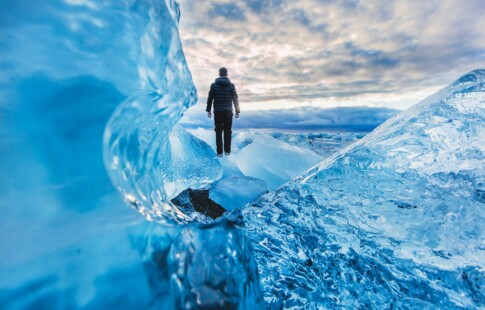
Wind-Powered Ocean Drones and What They Teach Us About the Sea
We are reader-supported. When you buy through links on our site, we may earn affiliate commission.
Many believe outer space is the next great frontier and that our current trajectory has placed us on a path toward the stars. It’s far more reasonable to say that the ocean is the next great frontier. It’s a fair assumption, especially with the pace of progress and the investments of entrepreneurs like Elon Musk. With recent innovations like wind-powered ocean drones, we’re more likely to see a thorough mapping of the seas before we see extensive space travel.
We should examine today’s technology in greater detail, looking at the application of “saildrones” for fishing, drilling and environmental science. These drones have enormous potential to teach us more about the mysteries of the sea — let’s touch on a bit of what we’ve already learned.
Creation and Objective of the Saildrone
In the oceanographic community, the saildrone belongs to a category of robots called “unmanned surface vehicles,” abbreviated to USVs. These particular USVs require no fuel, drawing their energy from wind power to sustain propulsion. In doing so, they can sail around the globe for months at a time, making a minimal impact on aquatic ecosystems as they fulfill their responsibilities — collecting and relaying data to researchers.
An Alameda startup called Saildrone Inc. created these USVs. Founded in 2012, they developed a replacement for traditional research vessels, a 1,200-pound craft sturdy enough to withstand the harsh conditions of the ocean while taking accurate readings of its depths. The objective of Saildrone Inc. is to accrue salable insight into the environment, weather, shipping and fishing while exploring opportunities for oil and gas.
Richard Jenkins is behind the project, a sailor and adventurer who engineered the first saildrone. His early interest in carpentry and boatbuilding led to enrollment in Imperial College London, where he studied mechanical engineering. He eventually turned his experience toward developing a drone sailboat that could autonomously take itself around the world on solar power, and by 2011, he had a prototype.
After acquiring funding from the Schmidt Ocean Institute, Jenkins began testing and improving upon his original design. He proved the durability of his saildrones against 40-foot waves and across a 10,000-mile trek, earning the attention of organizations like the U.S. National Oceanic and Atmospheric Administration. So what can the NOAA and other organizations gain from the use of these USVs?
Applications and Insights From the Saildrone
Collecting measurements at the actual location of an object or material — as opposed to remote sensing — can cost hundreds of millions of dollars out at sea, and organizations like the NOAA don’t have adequate funding for fuel and crews. They have only 16 ships, and there are less than 200 buoys offshore globally, making it difficult and expensive to gather data.
Saildrones are comparatively inexpensive technology, an alternative that allows the NOAA to explore the ocean at a fraction of the cost of the large vessels they would otherwise depend on. That said, these USVs are more than a money-saving measure, and they have the precision of satellite, equipped with science-grade sensors that measure both oceanic and atmospheric variables.
To place their functionality in context, think about the fact that a fleet of saildrones has helped to assess the size of pollock fish stock in the Bering Sea. They’ve improved the quota system used to manage fisheries, and by extension, prevented a collapse of the fish stock and protected a delicate ecosystem. These drones have preserved the environment in similar ways, and a fitting example involves fur seals.
The National Marine Mammal Laboratory fixed GPS tags to several seals in a large colony near the Pribilof Islands, hoping to understand why their numbers were dwindling. Through the location and depth data from the tags, in conjunction with the acoustic data from the saildrones, the researchers found that the mother seals were expending too much energy finding sustenance to provide for their pups.
Within the realm of environmental conservation, Jenkins’ saildrones have the potential to identify problems in a natural habitat and provide relevant information to those who can make a difference. It’s just one of many ways ocean exploration technology is changing our understanding of the sea and how we confront challenges that were once too arduous or costly to address. The pollock population and seal pups are only the beginning.
Ocean Drones: Sailing Toward Tomorrow
Though the ocean comprises 70 percent of the earth’s surface, our understanding of it is dangerously limited. We still know very little about such a large part of the planet, and our lack of awareness has the potential to compromise our food supply and disrupt sensitive ecosystems. More than that, an indifferent attitude might very well jeopardize the health and safety of future generations.
Richard Jenkins’ technology holds promise for environmental conservation, collecting valuable insight that will inform how we, as a society, interact with the sea. Through ocean drones, we’ll have a greater appreciation for the gravity of our actions and how they affect natural habitats. In acknowledging our impact, we can reach a better balance with nature — slowly, but surely.
Share on
Like what you read? Join other Environment.co readers!
Get the latest updates on our planet by subscribing to the Environment.co newsletter!
About the author
Jane Marsh
Starting from an early age, Jane Marsh loved all animals and became a budding environmentalist. Now, Jane works as the Editor-in-Chief of Environment.co where she covers topics related to climate policy, renewable energy, the food industry, and more.




